On May 23, 2015, Carowinds announced the closure of its iconic racing wooden roller coaster, Thunder Road. Originally opened in 1976, Thunder Road has taken nearly 40 million riders on a wild ride across the North Carolina and South Carolina state line, becoming the first roller coaster to accomplish this feat. With the closure of the classic coaster rapidly approaching, we wanted to take a look at Thunder Road’s storied history, and that begins with the history of Carowinds itself.
The “back stretch” of Thunder Road. Photo ©Carowinds
Carowinds was the brainchild of Charlotte-area business man E. Pat Hall. After a trip to Disneyland, Hall was inspired to bring a similar family entertainment concept to the Charlotte area, but with a “Carolina” twist. After more than a decade of planning, Hall purchased several hundred acres of land south of Charlotte, on the border of North Carolina and South Carolina, and the park opened in 1973. Carowinds was able to showcase the Carolinas with seven themed areas evoking the heritage and history of the region. Opening attractions included a Monorail, a SkyRide, the Powder Keg log flume, Carolina Sternwheeler paddleboat, Double-Decker Carousel, several flat rides and the Carolina Railroad. Three of the park’s opening attractions, the Carolina Skytower, then known as the Ionosphere Tower, Shortline Railroad, now known as Snoopy’s Junction, and Carolina Goldrusher mine train roller coaster, are still in operation today.
Carowinds from the Air in 1973. Photo ©www.carowindsearlyyears.com
Unfortunately for Hall, Carowinds opened during the Middle East Oil Crisis and OPEC Embargo of the early 1970’s. After operating the park for the 1973 and 1974 seasons, Hall sold the park to Family Leisure Centers Inc., an Ohio-based joint venture of Taft Broadcasting and the Kroger Company. At the time, FLC also owned Kings Island in Ohio, which opened in 1972. Taft Broadcasting brought new life to the park with their Hanna-Barbera characters, coupled with the inclusion of several rides aimed to appeal to younger guests. Carowinds added its second roller coaster, and first wooden coaster, with the addition of Scooby-Doo in 1975.
In 1976, Carowinds opened Thunder Road, a Philadelphia Toboggan Company “racing” wooden coaster, designed by Curtis D. Summers. It was Carowinds’ largest and most expensive ride built in the park’s short three years of existence. The coaster featured over half a million board feet of treated wood, 5500 gallons of paint, and 60-70 tons of nails, bolts and track. The $1.6 Million cost of the coaster in 1976 would roughly translate to nearly $6.7 million today. Thunder Road’s original paint job featured a red, white and blue color scheme.
Thunder Road’s Red, White and Blue Color Scheme. Photo ©Carowinds
Thunder Road was based on the 1958 Robert Mitchum film of the same name, which according to IMDB, depicts “A veteran who comes home from the Korean War to the mountains and takes over the family moonshining business. He has to battle big-city gangsters who are trying to take over the business and the police who are trying to put him in prison.” According to www.carowindsearlyyears.com, Route 9, going north from Atlanta, was nicknamed Thunder Road during the prohibition when bootleggers with souped up car engines would race to outrun the law & revenuers
.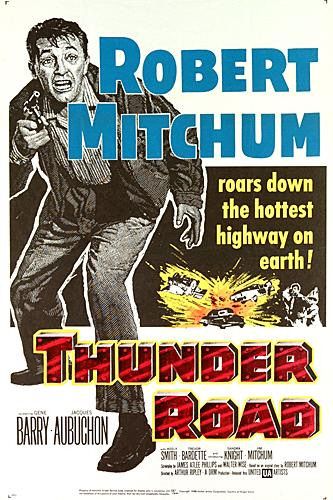
Thunder Road Starring Robert Mitchum
Carowinds’ current Vice President of Operations, Jerry Helms, who has been with the park since 1975, was working as a seasonal security officer for the park while Thunder Road was being constructed.
“Thunder Road was a big deal back then,” Helms said. “It was desperately needed by Carowinds. After a disappointing 1975 season, Thunder Road gave the park a much needed attendance boost. It was followed in 1977 by White Lightning. Together, these rides changed the feel of the park and cemented it as a “keeper” for Family Leisure Inc.”
There was a big marketing push for Thunder Road in 1976, as shown below on the 1976 park map, and a cartoon promoting the new ride.
photos courtesy of www.carowindsearlyyears.com
Thunder Road’s layout is a near replica of the Racer at Kings Island, which opened in 1972, and Kings Dominion’s Rebel Yell, which opened in 1975. Thunder Road’s initial drop is several feet taller, and track length is approximately 400′ longer than both of its sister coasters.
Thunder Road’s Early Two Trains, Moonshiner on the left, Sheriff on the right. Photo via @Carowinds twitter.
In the early years of Thunder Road, the coaster’s two trains were themed, one track’s trains representing the Police, while the other track represented the ‘Shiners. These trains actually originated in Chicago, as they were designed for the Jetstream coaster (another PTC wooden coaster) at Riverview park, which operated from 1964 to 1967. Each train held 32 passengers. Carowinds utilized the two Jetstream trains from 1976 to 1980, when they purchased four lighter 24-passenger trains from PTC. The Jetstream trains were later scrapped.
Thunder Road’s Station. Photo ©Carowinds
Riders begin side by side on Thunder Road’s dual loading station. After the trains are cleared by the station, they fan out into opposite 180º turns and “s-curves” under the brake run, where they reunite side by side on Thunder Road’s 93′ high lift hill. While I could describe the coaster’s ascent, I feel that it’s best summed up by Wake Forest University’s Eric Wilson, in his article about Thunder Road in the July 2014 issue of Our State Magazine.
photo ©Coaster101
Sanity may be in contemplating the summit, toward which, best I can, I crane. Can’t see it; angle’s too sharp. Only the sky, scalding aqua, tremendous as the cosmos, implacably marshaling the pressure, which will, in an instant, blast down on my poor carcass.
Click. Click. Higher, higher. We pass under a sign: “Grit your teeth.” Another: “Bear the load.” A third: “Enjoy your ride …” There’s a fourth up ahead. Can’t make it out. “Wuuuu-ohhhh,” the sound wobbles from the front, five cars up. I grip the bar like a flyer his trapeze. Metal rumbles. The rhythmic groan explodes into howls. The last sign blurs into my squinting eyes, “on Thunder Road,” and my car totters on the apex, above the abyss hovers, and
I plummet. Stomach rips through my cranium. Out rushes all but terror. I am going to hurl. I am going to die. But it’s not terror: the ecstasy now of crazy speed, soul screaming through the void. If this is death, kill me 10 times.
Thunder Road’s Dual 88′ Drops. Photo ©Carowinds
Reaching speeds of nearly 60 mph, the coaster trains barrel side-by-side on the park’s southern border through four identical “camel-backed” hills of varying heights, into one last steep climb. From there, the two coaster tracks fan out again, making a u-turn back towards the station, racing each other through six more speed-filled hills and an open-air “tunnel” before screeching into the brake run after just over two minutes of ride time and nearly 4,000 feet of track. The constant hills result in great moments of air-time, especially over the smaller hills.
Thunder Road racing through the first set of “Camelback” Hills. Photo ©Carowinds
Ownership of Carowinds had transferred from Family Leisure Centers to Kings Entertainment Company, which in turn was acquired by Paramount Communications. The park was renamed Paramount’s Carowinds in after the park was purchased in 1993.
Thunder Road continued to anchor the “County Fair” section of Carowinds for two decades. In 1996, in conjunction with the 20th anniversary of Thunder Road, the left side of the coaster had its trains reversed. Thunder Road would still race, but one train would face forward, while the other train would traverse the track facing backwards. Thunder Road would continue to operate with one side reversed until 2008, when both trains faced forward again.
Carowinds 20th Anniversary Sign, Featuring Lines for Forward and Backward Rides. Photo: ©Carowinds
Cedar Fair acquired the Paramount Parks in 2006, and all of the chain’s racing wooden coasters, including Thunder Road, Rebel Yell at Kings Dominion and The Racer at Kings Island were restored to both tracks facing forward.
In 2008, after 32 of years of operation, Great Coasters International was contracted to provide some “TLC” to Thunder Road in the form of retracking.
photo © Theme Park Review Forum Member “rctlilman”
“We are typically called in for our expertise on defining and fixing problem areas on older wooden roller coasters,” said Adam House, Design Engineer for GCI. “Carowinds came to us and described some of the problem areas and issues they were seeing. From there, our crews showed up on site to evaluate everything and refine exactly what needed to be done. The work performed ranged from structural bracing to modified profile and track work.”
House went on to describe the process in depth.
“Evaluation of the ride in its current condition is the first real step,” he said. “Someone from Great Coasters goes to the park to look over the existing ride and get a feel for what scope of work needs to be completed. We work with the park to determine which sections need repair and what kind of timeline they would like to have, especially for a multi-year project like Thunder Road, and we then send out a team to survey the ride and tell us exactly what the rides’ track is doing. “
photo © Theme Park Review Forum Member “rctlilman”
“From there, we utilize this survey information along with original drawings of the ride to either re-design or slightly modify the ride, whichever we see as the better solution. Our crew then takes this information and begins tearing out structure or track–whichever is applicable–and then rebuilding or repairing those sections. Many people don’t realize the time and effort we put into repairing and improving rough wooden roller coasters around the world,” he added.
When asked about the most difficult aspect of refurbishing the iconic coaster, House mentioned the delicate balance between the classic and new look and feel of Thunder Road.
photo © Theme Park Review Forum Member “rctlilman”
“Really, with an old classic ride like Thunder Road, the most difficult part is keeping the ride looking and feeling classic,” House said. “We wanted to improve the ride and make it ride like it was brand new, but we never want to sacrifice the classic nature of an old ride. Sometimes, this is a difficult trade off that we need to find a good balance for.”
In talking to House, you can tell that he definitely has a special place in his heart for Thunder Road and similar roller coasters.
“Really, with any classic ride like Thunder Road, I always tell people that this is why I got into the industry of building roller coasters,” he said. ” There is just something about a ride like that that takes you to a simpler time and place and makes you realize that rides don’t need to be the largest or fastest to just be fun to ride!”
As Thunder Road’s time at Carowinds comes to a close, the park continues to celebrate the legacy of the historic coaster. Thunder Road’s first 100 riders each day between now and July 26 will receive a commemorative button, and starting July 13, the first two trains of the day will also receive a commemorative poster.
Thunder Road will give its last wild ride across state lines at 10:00pm on July 26.
But what’s next? Here’s hoping we’ll have the “Wright” Information about Carowinds’ 2016 “BIG splash” sooner rather than later.
There's more than one way to make a BIG splash in 2016…
Let the speculation begin pic.twitter.com/EqLmk7sMb2
— Carowinds (@Carowinds) July 6, 2015
Do you have any memories of Thunder Road? What do you think will replace it? Let us know in the comments below.
For more information on Thunder Road or Carowinds 2016 Project, be sure to visit www.carowinds.com, or follow the park on Facebook and Twitter.

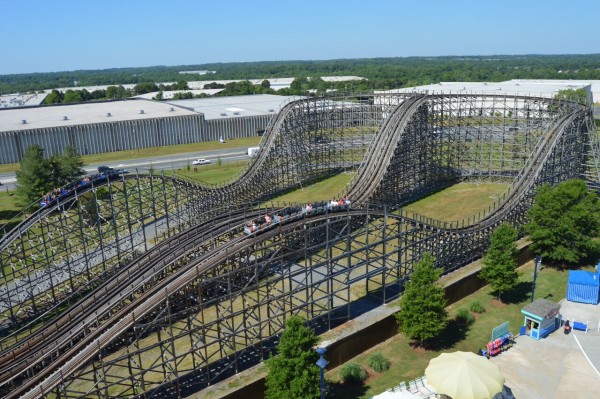
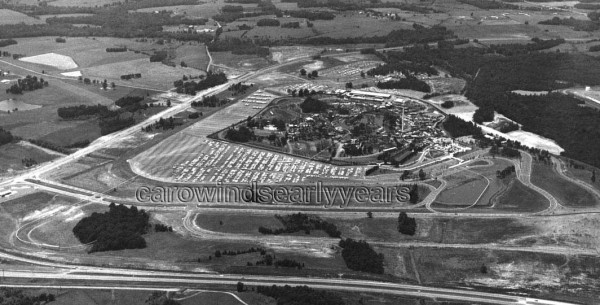
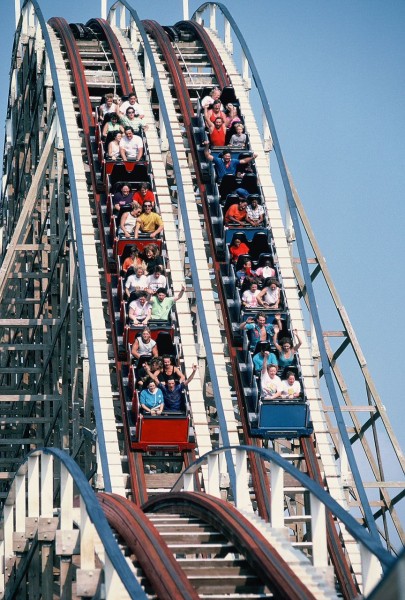
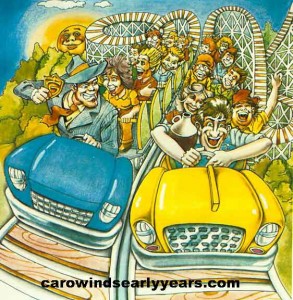
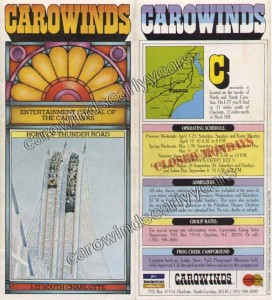
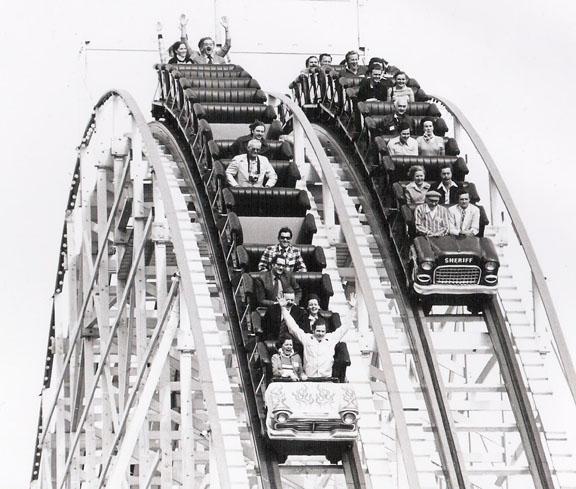
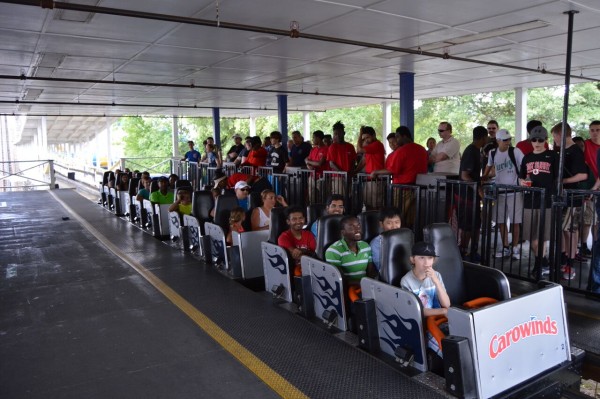
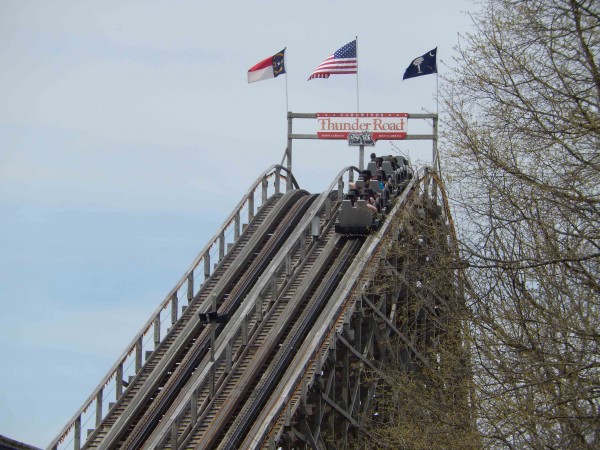
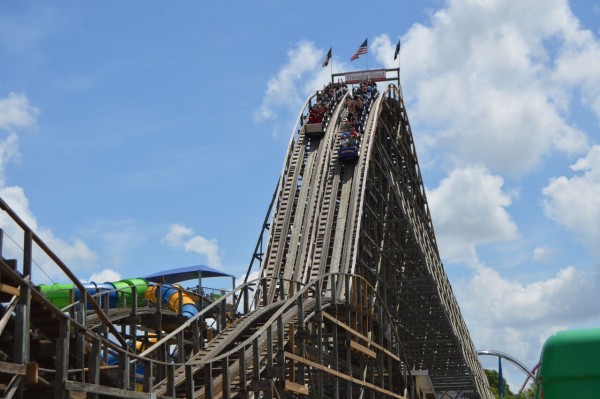
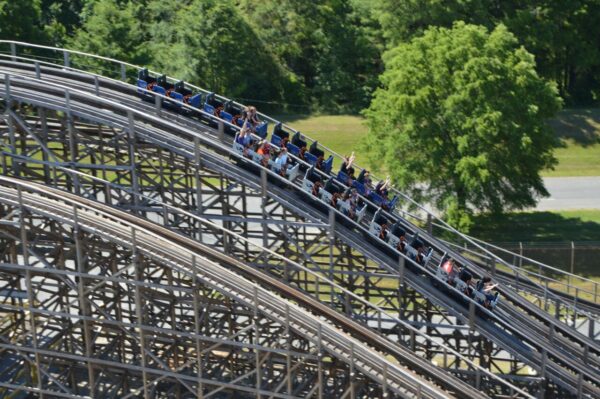
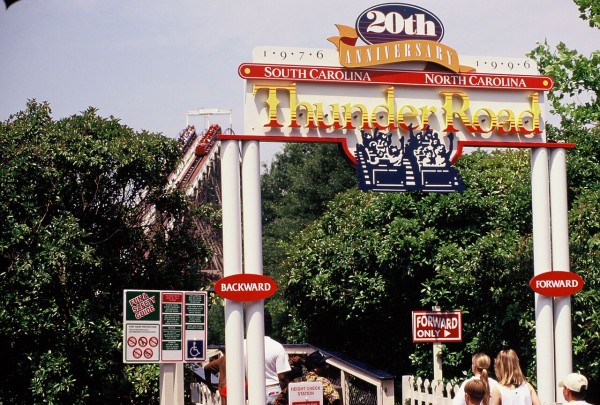
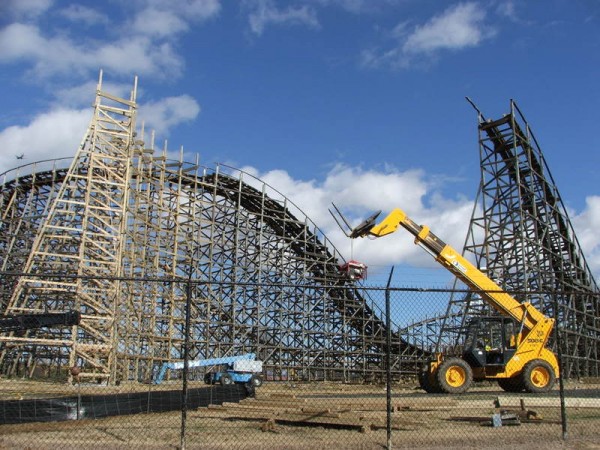
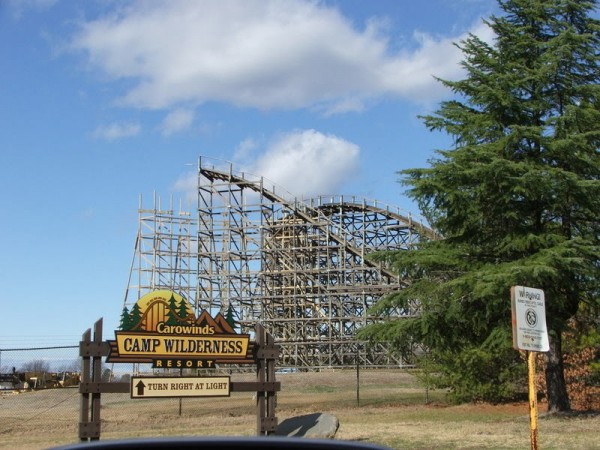
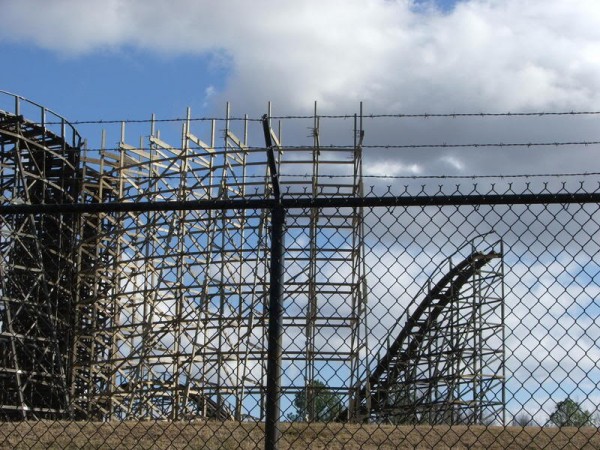
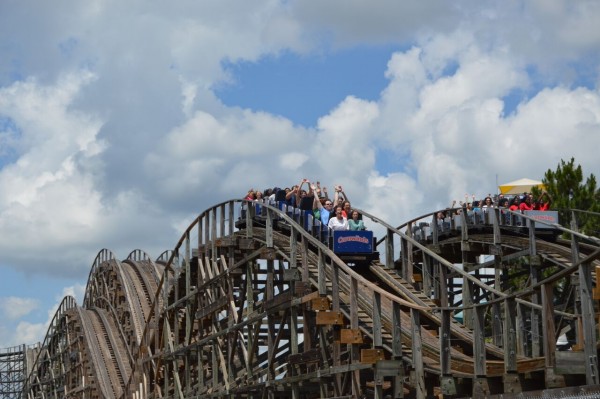
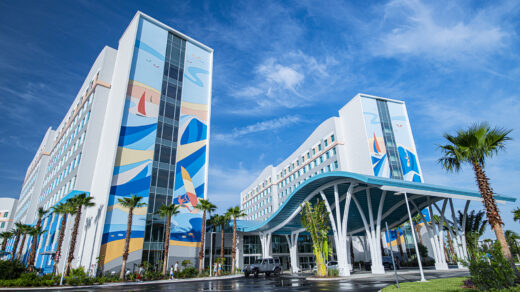
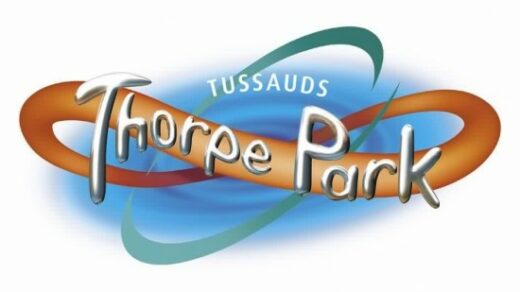
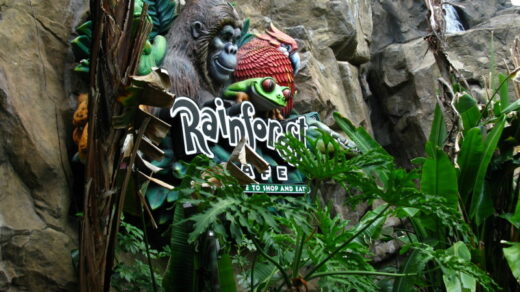





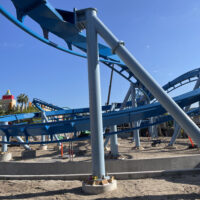





Thank you for this great article! I have great memories of Thunder Road. As a kid I won a contest and was on the very first ride. I’m sorry to see it go. 🙁
Thanks for sharing Mark!
I went with my family to Carowinds for the first time in 1976 to ride Thunder Road. I was only four years old. I was too scared to ride after I saw it up close, but the rest of my family rode while I stood with my aunt. My grandfather came back into the station and said “eeny, miny, and I don’t want no mo”. It took his breath away, but all of my family loved it. I went back in 1981 to get my first ride. I believe we left having ridden it close to ten times. I was just there last Wednesday from NYC to ride for the last time. I still loved it. Both times they had the trains racing neck and neck. It was just like my first rides.
Awesome story Lane! The ride sure will be missed – another classic wood coaster going away.
I have many great memories of riding Thunder Road!! It never failed to thrill me even when I spent one afternoon with a friend riding it forwards and backwards over and over again. My favorite memory is of my family going there the first time. My boys were 5 and 7. My youngest son was determined to ride it and I was not wanting him too. Shortly into the ride I heard him crying ahead of me. I told his dad who was sitting beside him “I told you he was too young!” He said “no, listen to him.” He was crying over and over “don’t let this ride end!” He was hooked!!! Farewell old friend!!! You’ll be missed by the Gresh family!!
I think, looking at the plot of land, it looks like a launch coaster would fit nicely 😉